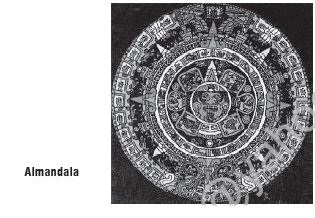Describe briefly the Aztec Calender?
Aztec Calendar is perhaps the most famous symbol of Mexico. It is a twelve feet, massive stone slab, carved in the middle of the 15th century. Many renditions of it still exist and have existed throughout the years and throughout Mexico.
Historically, the Aztec name for the huge basaltic monolith is Cuauhxicalli, the Eagle Bowl, but it is universally known as the Aztec Calendar or Sun Stone. It was during the reign of the 6th Aztec monarch in 1479 that this stone was carved and dedicated to the principal Aztec deity, the sun. The stone has both mythological and astronomical significance. It weighs almost 25 tons, has a diameter of just under twelve feet, and a thickness of three feet.
The Aztec calendar kept two different aspects of time; tonalpohualli and xiuhpohualli. Each of these systems had a different purpose. The tonalpohualli was the 'counting of days.' The xiuhpohualli was the 'counting of the years.' This calendar was kept on a 365-day solar count. It was divided into 18 periods, with each period containing 20 days, called veintenas. This left five days that were not represented. These were called "nemontemi." These are the five transition days between the old and the new year, and were considered days of nothing.
